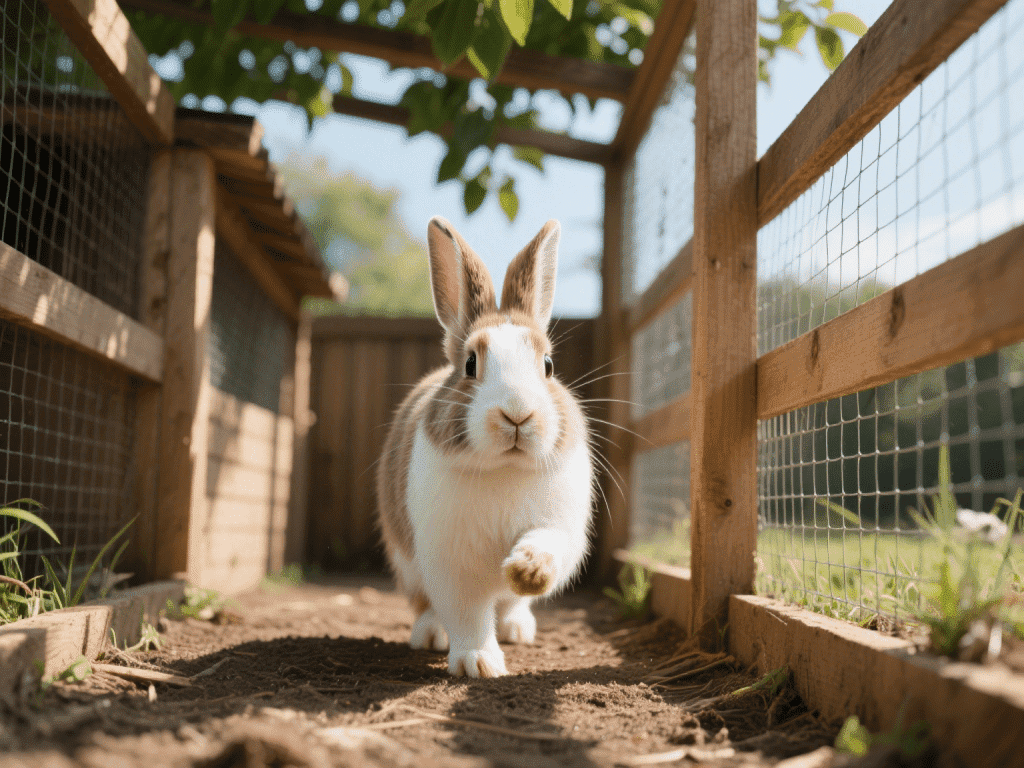
Designing a Rabbit‑Proof Outdoor Run: Safe Exercise Space for Your Bunny
As a seasoned rabbit behaviorist and long‑time DIY enthusiast, I’ve guided countless b...

Introduction
Aromatherapy can benefit canine well-being when approached correctly. Unlike humans, dogs metabolize certain compounds differently, requiring extra caution. This guide details canine-safe essential oils, dilution protocols, administration methods, and safety precautions to ensure your dog reaps the benefits without adverse reactions.
Relaxation and Stress Relief:
Calming oils like lavender and chamomile can soothe anxiety during thunderstorms or separation.
Skin and Coat Health:
Specific oils such as cedarwood and geranium may alleviate mild dermatitis or flea irritation when properly diluted.
Immune Support and Respiratory Health:
Eucalyptus (in very low concentrations) can help with mild congestion.
Tea tree oil is NOT recommended due to high toxicity risk unless veterinary-prescribed.
Behavioral Enrichment:
Certain scents can alleviate boredom; diffusing citrus (lemon) in short bursts can be mentally stimulating when used sparingly.
Lavender (Lavandula angustifolia):
Benefits: Calming, anti-inflammatory, antimicrobial.
Dilution Ratio: 0.125% (1 drop per 4 teaspoons of carrier oil) for topical use. Can diffuse 5–10 minutes in a well-ventilated room.
Chamomile (Matricaria recutita):
Benefits: Eases upset stomach, reduces itching, promotes relaxation.
Dilution Ratio: 0.125% topically; diffuse intermittently.
Cedarwood (Cedrus atlantica):
Benefits: Natural flea repellent, soothing for dry skin.
Dilution Ratio: 0.25% (1 drop per 2 teaspoons of carrier oil). Avoid sensitive areas; do not diffuse for extended periods.
Frankincense (Boswellia sacra):
Benefits: Anti-inflammatory, supports immune health, may ease arthritis discomfort.
Dilution Ratio: 0.125% for topical use; diffusion is generally safe for 5–10 minutes.
Ginger (Zingiber officinale):
Benefits: Helps with motion sickness, nausea, and digestive upset.
Dilution Ratio: 0.125% diluted; can be added to food under veterinary guidance. Avoid ingestion without supervision.
Carrier Oil Choices:
Fractionated Coconut Oil: Odorless, long shelf life, great for skin absorption.
Sweet Almond Oil: Rich in vitamin E, hydrating, but contraindicated if allergic.
Jojoba Oil: Closest to canine skin’s natural sebum, absorbs well without clogging pores.
Dilution Guidelines:
Puppies (Under 12 Months): Maximum 0.05% dilution (1 drop per 10 teaspoons carrier oil).
Adult Dogs (12 Months–7 Years): 0.125% dilution for general topical use.
Senior Dogs: Start at 0.05% and monitor skin tolerance; adjust up to 0.125% if well-tolerated.
Calculating Drops per Milliliter:
One standard drop = 0.05 mL.
For 0.125% dilution in 30 mL carrier oil: 30 mL × 0.00125 = 0.0375 mL of essential oil ≈ 1 drop.
Topical Application:
Always perform a patch test: apply diluted oil behind the ear; observe for 24 hours for redness, itching, or swelling.
Avoid application on face, genitals, mucous membranes, and broken skin.
Massage gently; start with a single application per day.
Diffusion:
Use an ultrasonic diffuser placed at least 3 feet from the dog’s resting area.
Diffuse for maximum 10 minutes per hour; ensure fresh air exchange.
Never force your dog to remain in the room if signs of discomfort appear (sneezing, drooling, coughing).
Ingestion (Only Under Veterinary Guidance):
Rarely recommended clients may add a single drop of ginger or peppermint (diluted to 0.05%) to canned food to ease nausea.
Never allow ingestion of tea tree, pennyroyal, or other high-risk oils.
Mild Symptoms:
Excessive drooling, vomiting, diarrhea, lethargy.
Severe Symptoms (Immediate Veterinary Attention):
Tremors, seizures, difficulty breathing, uncoordinated movements.
If ingestion suspected, induce vomiting only under veterinary advice; do not attempt home remedies like hydrogen peroxide without direction.
Pregnant or Nursing Dogs:
Avoid essential oils unless vetted by a holistic veterinarian; hormonal fluctuations can alter metabolic tolerance.
Underlying Health Conditions:
Dogs with liver or kidney disease may process compounds differently; always check with your veterinarian before introducing any essential oil regimen.
Breed Sensitivities:
Brachycephalic breeds (e.g., Pugs, Bulldogs) may be more prone to respiratory irritation; keep diffusers at a safe distance and monitor for sneezing or coughing.
Conclusion
When used judiciously and under veterinary guidance, select essential oils can be a safe, effective addition to your dog’s wellness routine. Stick to well-researched oils—lavender, chamomile, cedarwood, frankincense, and ginger—and always dilute appropriately with a high-quality carrier oil. Prioritize patch testing, monitor for adverse reactions, and choose gentle diffusion protocols to maximize benefits. By following these guidelines, you’ll enrich your dog’s life without compromising safety.

As a seasoned rabbit behaviorist and long‑time DIY enthusiast, I’ve guided countless b...

For many cat owners, the word “bath” sparks visions of frantic escapes, high-pitched y...

IntroductionAromatherapy can benefit canine well-being when approached correctly. Unlike h...

IntroductionArthritis affects up to 90% of cats over 10 years old, causing pain, stiffness...

IntroductionPet obesity is a growing concern, leading to joint issues, diabetes, and reduc...

IntroductionCats sleep up to 16 hours a day, adopting various positions that reflect their...
Comments on "Safe Essential Oils for Dogs: A Complete Usage Guide" :